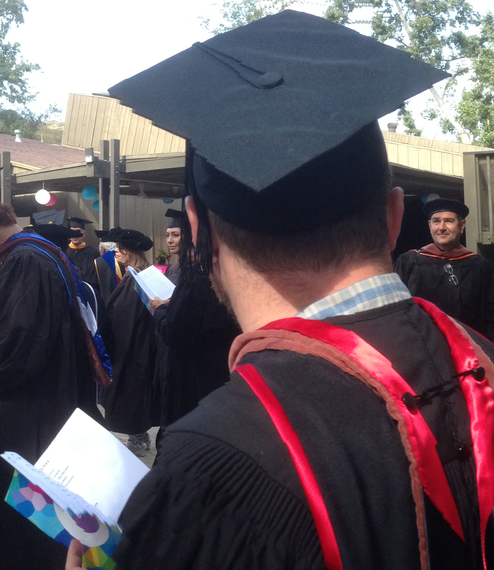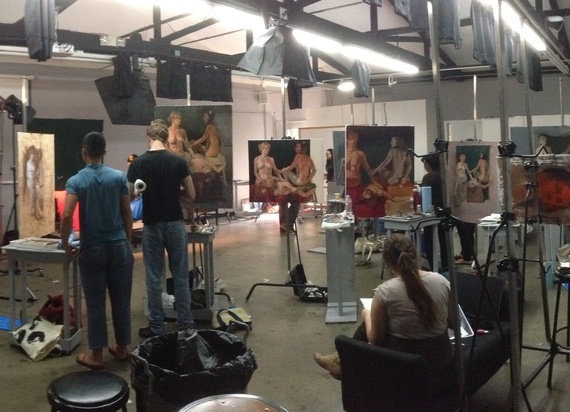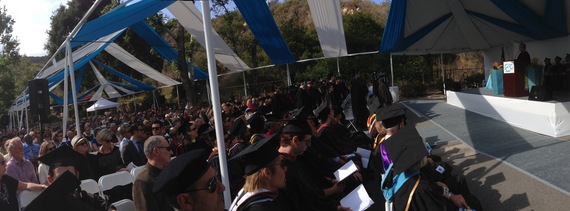A few years ago when I was an adjunct professor at a major California art school I remember discovering that our institution had fourteen vice presidents! Shocked, I wondered what we needed so many for. I imagined our president retiring and a war of succession being waged that would raise one bloody victor above all the rest. Alas, once ensconced in those lucrative positions, institutional vice presidents do not venture forth to battle from one cushioned leather throne to another. Why bother when you earn a king's ransom where you are?
Meanwhile, the students were paying an outrageous sum for an arts education, though an admittedly good one. The faculty were excellent, classes illuminating, and the student achievement at times inspiring. However, over the dozen years I taught there scholarships dropped to absurdly low levels, so that bulk of the students in any given class had either rich parents paying their tuition, or horrendous loan obligations looming over their heads. It is difficult enough to lead a creative life when financially unencumbered, but when saddled with over a hundred thousand dollars in debts, it is damn near impossible.
I can promise you that it was not the instructors who were costing the students so much money. Most of us were not making enough to live on. I was paid about five thousand per class per semester. Luckily, I've always had an income from painting to 'rely' on. I estimated each student was paying about three thousand per class. I might have over twenty students in a painting class. You do the math. Where was all that extra money going?
In a recent New York Times article entitled "The Real Reason College Tuition Costs So Much," Paul F. Campos demonstrated that it was the rise in the number of administrators hired, and the amount they were paid, that has caused the incredible increase in college costs for students. He noted a study that indicated "while the total number of full-time faculty members in the C.S.U. system grew from 11,614 to 12,019 between 1975 and 2008, the total number of administrators grew from 3,800 to 12,183 -- a 221 percent increase." He also mentioned that while the salaries of full-time faculty had barely risen since 1970, the recent trend towards seven figure salaries for higher-ranking administrators was indefensible.
In the smaller school where I now teach I've noticed that 'administration creep' is also setting in. We are quick to hire new administrators, two or three a year, but never seem to have money to hire more faculty. I am sure this is not unique to my institution. Everywhere it seems the support system for the school seems to take precedence over the actual mission of the school, to teach. Administrators get to decide what they need in order to operate, and how much they get paid. This alone may explain the rise in tuition costs that Campos discussed in his Times article.
What we need is an education revolution. Let's reboot this behemoth. Refashion it into a lean, mean educating machine. Education is becoming so extravagantly expensive that only the rich or future-rich can afford it. As a culture we don't have much to lose. If we feel that the liberal arts have a value to civilization as a whole, then let's consider making the study of them affordable to a wider swath of the population than just the children of the super-rich or super-debtors.
Here are some suggested ground rules for an education revolution:
1) No administrator can earn more than the highest paid faculty member.
2) The average salary of full-time administration personnel cannot exceed the average salary of full-time faculty members.
3) The number of full-time administrators cannot exceed fifty percent of the number of full-time faculty.
4) If faculty salaries are set by administrators, then administrator salaries should be set by faculty.
5) Only one vice-president per school.
These changes would put a focus back on the main purpose of a college or university... education, rather than the business of education. It would put a halt to the trend towards modeling schools of higher education along the lines of a corporation. It would put a focus back on quality faculty who are paid what they are worth to the institution. And, most importantly, it would rein in the upward spiral of tuition costs, once again allowing the youth of America to enjoy the fruits of knowledge without bargaining away their future freedom.
The administrations of our institutions of higher education are not going to reduce their population voluntarily. In 1729 Jonathan Swift had a 'Modest Proposal' for lightening the burden of the poor upon society. I suggest that faculty take a page from his book and invite their administrators to a next semester barbecue. Get to know them better. Ingest some of their meatier concerns. Give them a warm reception and slather them with your saucy badinage. Convince them that only through the rendering of their excesses can the next generations of educated Americans be saved from the poorhouse.




